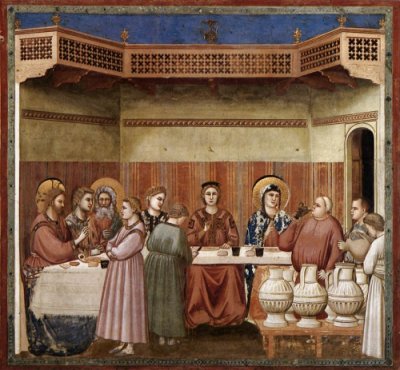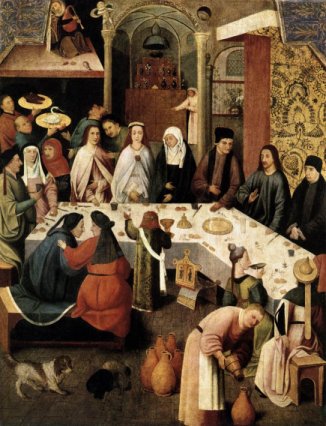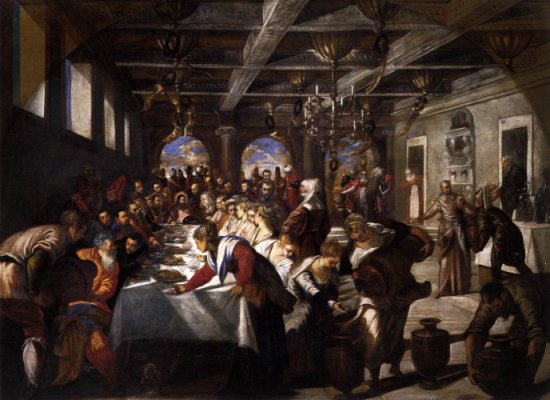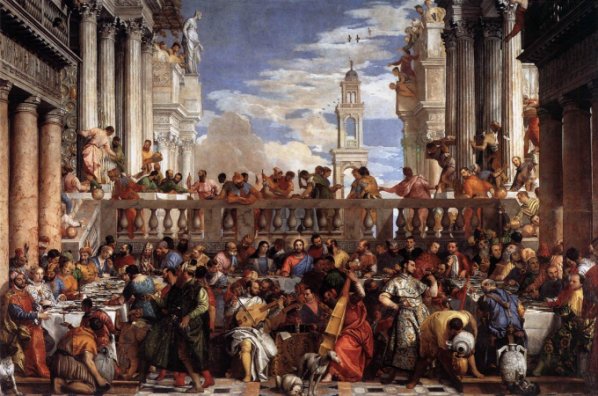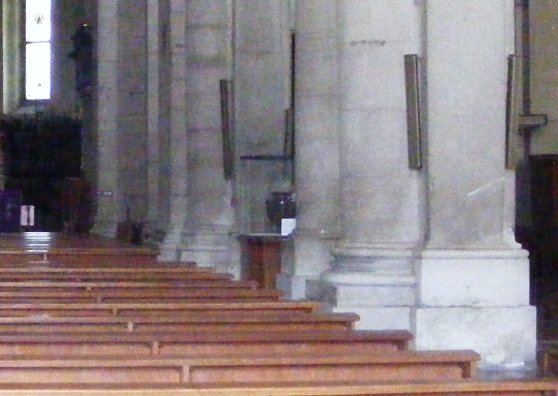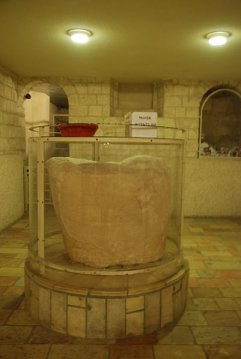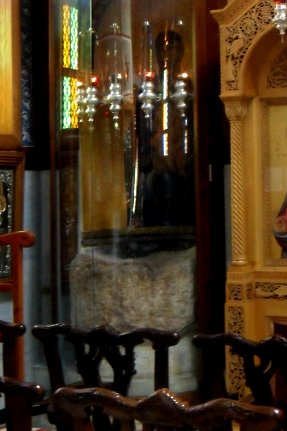|
The Wedding at Cana |
|
| ‘And the third day there was a marriage in Cana of Galilee; and the mother of Jesus was there: And both Jesus was called, and his disciples, to the marriage. And when they wanted wine, the mother of Jesus saith unto him, They have no wine. Jesus saith unto her, Woman, what have I to do with thee? mine hour is not yet come. His mother saith unto the servants, Whatsoever he saith unto you, do it. And there were set there six waterpots of stone, after the manner of the purifying of the Jews, containing two or three firkins apiece. Jesus saith unto them, Fill the waterpots with water. And they filled them up to the brim. And he saith unto them, Draw out now, and bear unto the governor of the feast. And they bare it. When the ruler of the feast had tasted the water that was made wine, and knew not whence it was: (but the servants which drew the water knew;) the governor of the feast called the bridegroom, And saith unto him, Every man at the beginning doth set forth good wine; and when men have well drunk, then that which is worse: but thou hast kept the good wine until now.This beginning of miracles did Jesus in Cana of Galilee, and manifested forth his glory; and his disciples believed on him.’ John 2: 1-11 |
|
| Christ's first
miracle has given rise to much theological debate. Why was it a good
idea to encourage the drinking of large quantities of wine? And why was
Jesus so off-hand with his mother? The problem with the word 'woman' is one of translation, and of contemporary perception. The sense of the original Greek word was entirely courteous, but there isn't an entirely satisfactory English equivalent. When my wife and I were in Crete, the Greek speaking staff in the hotel addressed all women guests as 'lady', and for modern readers this might be an improvement. Raymond E. Brown In The Gospel and Epistles of John suggests that the word here is a reference to Genesis; Mary is the new Eve. (Thanks to Frank DeStefano for contributing this.)
So, with considerable trepidation, I am going to attempt something I
have never done before: my own translation of the Bible! How about: |
|
|
|
|
|
|
|
|
|
|
Firkins and wine jars. How much is a firkin? Alfred Edersheim has this to say in The Life and Times of Jesus the Messiah (1883): 'Here it may be well to add, as against objectors, that it is impossible to state with certainty the exact measure represented by the two or three firkins apiece.' For, although we know that the term metretes (Translated in the A.V. as 'Firkin') was intended as an equivalent for the Hebrew bath, yet three different kinds of bath were at the time used in Palestine: the common Palestinian or wilderness' bath, that of Jerusalem, and that of Sepphoris. The common Palestinian bath' was equal to the Roman amphora, containing about 5 ¼ gallons, while the Sepphoris bath corresponded to the Attic metretes, and would contain about 8 ½ gallons. In the former case, therefore, each of these pots might have held from 10 ½ to 15 ¾ gallons; in the latter, from 17 to 25 ½. Reasoning on the general ground that the so-called Sepphoris measurement was common in Galilee, the larger quantity seems the more likely, though by no means certain.' Around 120 gallons of wine seems more than enough, though perhaps not for Veronese. What is clear is that artists had no idea how big those jars should be. In 2010 we were in Ravenna, and popped in to the church of Santa Maria in Porto. There are so many wonderful things to see in Ravenna, and this church isn't really a regular port of call on the tourist trail. Maybe it should be - it claims to have one of the six jars used at the wedding at Cana. I apologise for my rather poor photograph - I didn't think to take a close-up at the time. (It's in the glass case in the centre of the picture.) |
|
|
|
|
|
Two thoughts. Firstly, as a
genuine relic, it's not very convincing - you wouldn't get 20-odd
gallons in that. But . . . could it be that Tintoretto knew of it? There
are many links between Venice and Ravenna. Compare it with the painting
above and see what you think. To see a more convincing jar you will need to travel to Kafr Kanna The relics on view there do hint, sadly, at the imperative to attract tourists. There are two churches, one Franciscan, one Orthodox, both claiming to be built on the site of the wedding feast. And, yes, you've guessed it, they both have a 'genuine' wine jar used at the biblical feast on show. Given that there were six, this is possible, I suppose. Inevitably, local wine (and jars to put it in) is now big business in Kafr Kanna. Well, good luck to them - making a living is never easy. |
|
|
|
|
